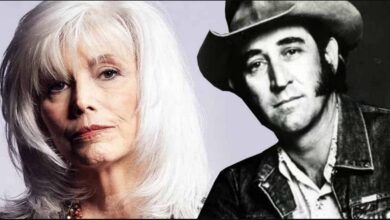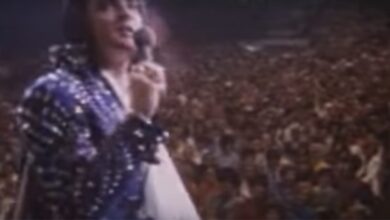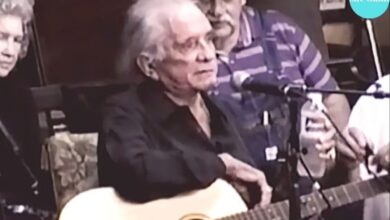Randy Travis’ Brother Delivered A Heartfelt Tribute With “Deeper Than The Holler”
“Deeper Than the Holler” stands as a quintessential example of classic country music, encapsulating the genre’s hallmark of storytelling and emotional resonance. Recorded by Randy Travis in 1988, the song highlights Travis’ distinctive baritone voice alongside the heartfelt lyricism that has characterized his career. Composed by Paul Overstreet and Don Schlitz, “Deeper Than the Holler” became a significant hit, claiming the top spot on the country charts and solidifying Randy Travis’ status as an iconic figure in the world of country music.
At the core of the song lies a profound expression of love and devotion, articulated through lyrical imagery and metaphor. The term “holler,” referring to a small valley or secluded area, serves as a powerful metaphor for the depth of the narrator’s feelings. The natural and rural imagery woven throughout the lyrics accentuates the authenticity and simplicity that the emotions embody. Lines such as “I can see the stars falling one by one, and in the middle of the night / Your love’s like a light that’s never gonna die” emphasize the narrator’s conviction that his love is both boundless and enduring, just like the expansive and timeless beauty of nature itself.
Musically, “Deeper Than the Holler” adheres to a traditional country format, featuring a straightforward yet evocative melody that allows the lyrics to take center stage. The arrangement prominently includes acoustic guitars and fiddles—two instruments emblematic of the country genre. This instrumentation, combined with Travis’ smooth and emotionally charged vocal delivery, creates a warm and inviting sound that resonates deeply with listeners. The song’s simple melodic structure serves to illuminate the emotional depth of the lyrics, transforming them into a heartfelt conversation between the singer and the audience.
The song’s influence and popularity are further evidenced by the number of artists who have chosen to cover it over the years. Notable renditions by contemporary stars such as Carrie Underwood and Josh Turner showcase their unique interpretations while honoring the song’s original essence. Each rendition brings forth different dimensions of the song’s emotional landscape, emphasizing its versatility and relevance even decades after its initial release. These covers have introduced “Deeper Than the Holler” to newer generations, ensuring its continued resonance in the ever-evolving landscape of country music.
What makes “Deeper Than the Holler” a beloved classic is its ability to convey intense emotions in a manner that is approachable and relatable. Themes of enduring love and unwavering devotion, paired with traditional country melodies, position the song as a timeless piece of music that transcends the years. The song continues to resonate with audiences, reflecting a universal appeal that mirrors the core values of country music: authenticity, heart, and storytelling.
Randy Travis, the man behind the song, is celebrated not only for his vocal prowess but also for his lasting contributions to the country genre. Born Randy Traywick in 1959 in Marshville, North Carolina, Travis ascended to stardom in the 1980s and 1990s, shining with a series of highly successful albums and singles. His ability to masterfully blend classic country sounds with contemporary influences has left an indelible mark on the music industry, shaping the future of country music while staying true to its roots.
The impact of “Deeper Than the Holler” extends beyond its chart success, marking a notable moment in Randy Travis’ career—and in country music history. The song serves as a testament to the artistry of both Travis and the songwriters, showcasing their ability to create a poignant portrayal of profound, abiding love. This legacy endures, echoing the genre’s unique capacity to touch the hearts of listeners through simple, yet powerful, melodies and sincere storytelling.
Throughout the decades, “Deeper Than the Holler” has found its place not just in country music playlists, but also in the hearts of fans who find solace in its messages of love and commitment. The song encapsulates the sentiment that true love transcends both time and space, mirroring the expansive nature of the holler itself—a peaceful refuge that embodies the essence of comfort and companionship.
As the song continues to be recognized and celebrated within the country music community, it serves as a reminder of the rich tapestry of emotions and experiences that classic country music offers. Randy Travis, as an artist, remains a significant figure in the landscape of this genre, with “Deeper Than the Holler” standing as a proud emblem of his legacy—one that will undoubtedly inspire generations to come.
In conclusion, “Deeper Than the Holler” is far more than a song; it is a cultural touchstone that embodies the spirit of country music. Its enduring popularity, emotional depth, and melodic simplicity make it a timeless addition to the genre’s storied history. As country music continues to evolve, the heartfelt narratives and authentic expressions found in songs like “Deeper Than the Holler” remind listeners of the genre’s roots and its capacity to connect deeply with the human experience.





